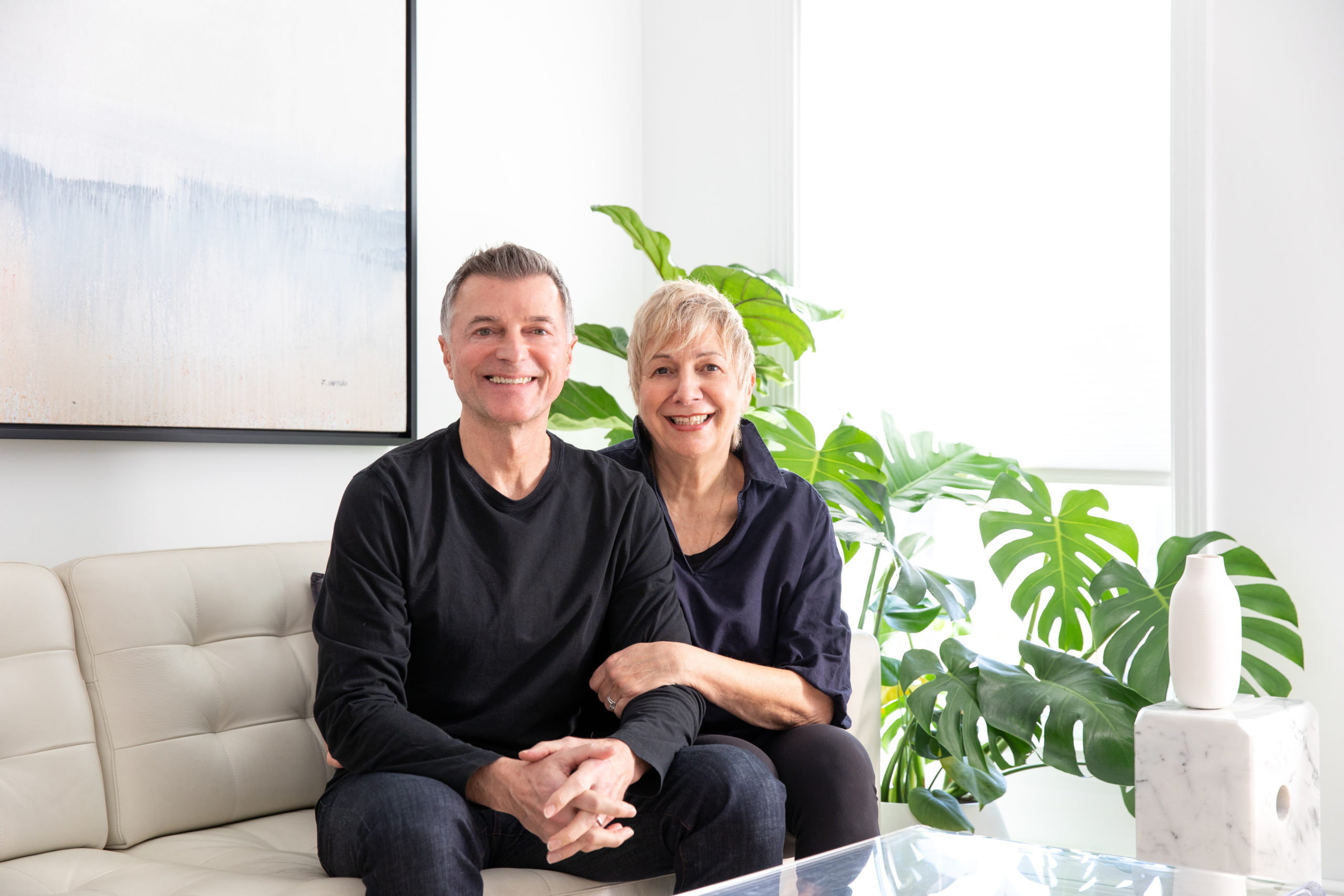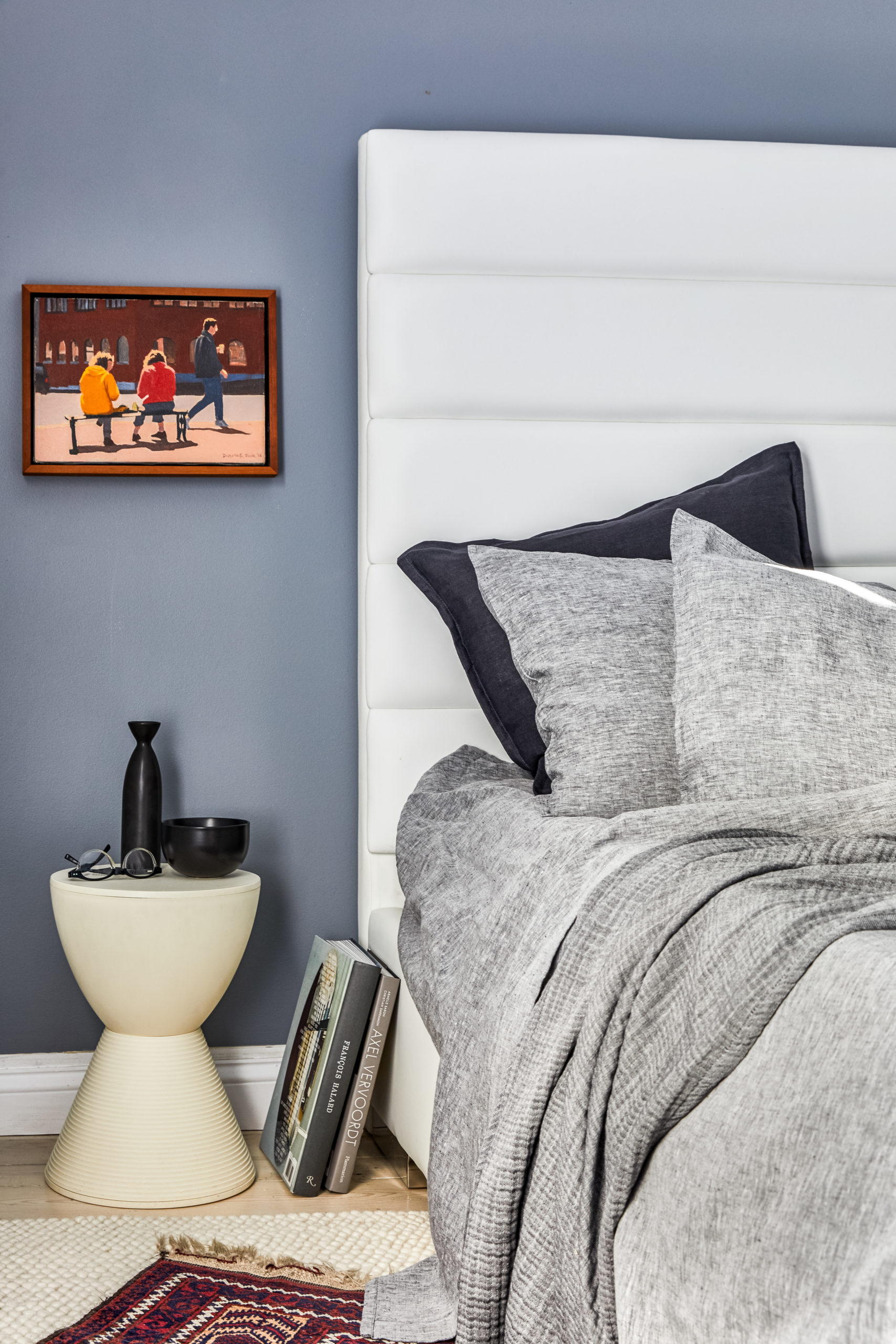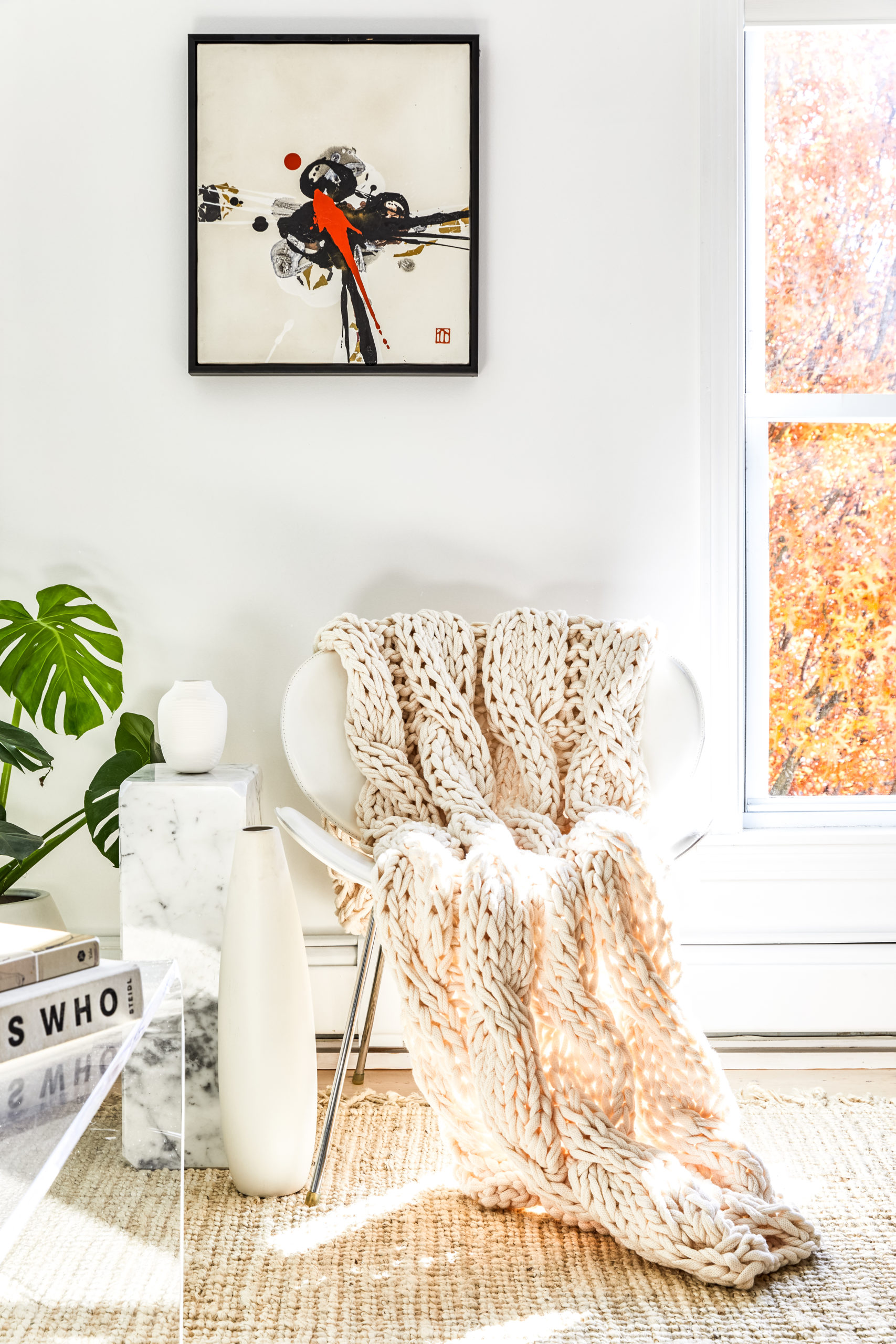Plants, Art, and Lots of Light at a Munjoy Hill Home
A Portland couple in a bright and lush East End home shift gears in their third act.

Anderson says her Italian heritage shines through in her love of food and cooking, as well as her appreciation for contemporary Italian lighting. 
When designing a space, she likes the art to provide the color while the walls remain neutral.
Antonia and Stephen Anderson live in an old house on Munjoy Hill. It was built in the mid-1800s, as was much of the neighborhood, which was populated primarily by working-class and immigrant families. According to Greater Portland Landmarks, houses on the Hill were distinguished by being small and in the “local vernacular.” Inglorious at the time, these structures have weathered and aged spectacularly. From the beginning, the Andersons’ house had character, though it did need a little work. “When we moved in, the floors were covered in carpet. I’ve pulled that up so you can see the square nails,” reveals Antonia; she then painted them with a lightening wash. “You can see the wood coming through, but they’re also white.”
White, the former fashion designer explains, is her favorite color to work with. It creates a sense of expansiveness in a space and makes the most of the natural light coming in from the windows. This is very important to her, as is having a healthy array of plants in every room—save the bedroom. (They emit very low amounts of carbon dioxide during the night, but they also help clean the air in living spaces and provide lush, bright color.) She likes lots of wood and dislikes clutter, which can feel distracting and burdensome to the subconscious. Good lighting is “very important,” she explains. “Our environment has a bearing on who we are as people and how we feel on a daily basis. It’s so important that our homes support us to be the best we can be.”

Antonia and Stephen have always had an interest in promoting physical health—for 15 years they owned the Body Architect (a gym and fitness studio) in Portland’s East End—but Antonia has recently taken a new turn. The Italian-born world traveler has decided to return to her design roots (her work at Cole Haan is what brought her to Maine in the first place) and open an interior design business. “My hope is to have the career now that I’ve been waiting for,” she says. “It will be my third career, but I’ve been wanting to do this for 16 years. I put it on hold to run the business with my husband, but I’ve had an incredible yearning to do this.”
Although the global pandemic has been a time of great upheaval and pain, it’s also helped spur change. Like many of us, Antonia has been staying indoors far more than usual. She’s spent time reflecting on her space and its meaning. She’s clarified her vision—for both her house and her life. “I want to be in service to people,” she says. “I want to help them make their lives better. We did that through the Body Architect. But I just love design. I love to look at beautiful things and create beautiful things for others.” It is, to hear Antonia explain it, a shift in focus but not in overall intention. She wants to help others find the joy in their living spaces that she finds in hers. “Before, when I was working out of the house, I was sort of just passing through the rooms,” she says. “Now, being here all the time, it’s made me really enjoy and appreciate our home as a nurturing space.”

Light, plants, art, and warmth—these are the key elements that make a room feel supportive to Antonia. This formula appears throughout her home. In the living area, you’ll find big chunky textiles strewn over comfortable couches, a broad-leafed monstera soaking in the sun from street-level windows, and, above the couch, a large painting of a snowy landscape by the Maine artist John Hafford. “It’s almost all white, and it’s incredibly soothing and relaxing. The moment I look at it, my shoulders drop,” says Antonia. In the kitchen, the couple has hung a piece depicting Scarborough Beach by Thomas Connolly that Antonia bought in 1993. “It captures the summer by the beach, and it is wonderful to look at in the winter when we feel like summer is never going to get here.” Aside from a single piece by a Japanese artist (her work in the fashion industry required Antonia to travel extensively around Asia), all of the couple’s work is by local artists. “I think good art is just as important to a home as good rugs,” she says.
The plants, carpets, and paintings all keep the couple’s white rooms from feeling too stark, and allow the natural charm of the old house to shine through. “I’m Italian, and I’ve lived in a lot of places, and I think I’m very inspired by architecture,” she says. “I like clean environments, but I also like the color that comes from paintings, oils and acrylics, and the green of leaves. When you have white walls and art you like, it creates a wonderful, light, and airy environment.” However, she knows that each person requires something different from their space, as does each environment. The light changes, she says, when you live in the woods or by the beach. A positive space is one that makes the best of its light and appeals to its inhabitants’ unique tastes. “You don’t have to spend a lot of money to make your house better,” Antonia adds. “Sometimes, it’s just decluttering. But I want to help people live their best lives. That starts at home.”

In the bedroom, soft grays and blues provide a sense of calm. 
Antonia is a big fan of plants in the living areas, but she advises against bringing plants into the bedroom or buying plants with “knife-shaped” leaves (it’s bad feng shui); here, one of her favorites, the round-leafed monstera peeks out.


